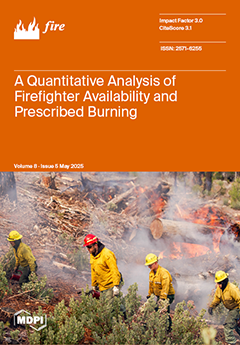In order to ensure the safety of methane/hydrogen, regular SiO
2 powder was modified. Fe(C
5H
5)
2/SiO
2 composite dry powder (CDP) was selected as the explosion-suppression material. Explosion-suppression experiments and numerical simulations were adopted to investigate the inhibition
[...] Read more.
In order to ensure the safety of methane/hydrogen, regular SiO
2 powder was modified. Fe(C
5H
5)
2/SiO
2 composite dry powder (CDP) was selected as the explosion-suppression material. Explosion-suppression experiments and numerical simulations were adopted to investigate the inhibition effect of 0% (
= 0%) and 20% (
= 20%) hydrogen doping ratios. The flame structure, flame propagation speed, and maximum explosion pressure are depicted to compare the inhibition effect of different mass fractions (
XFe(C5H5)2 = 0–6%). The results showed that CDP significantly reduced the flame propagation velocity and maximum explosion pressure of
= 0%. The best effect was observed when 6% Fe(C
5H
5)
2 was added, with the velocity reduced to 9.241 m/s. The maximum explosion pressure was reduced to 0.518 MPa, and the effect was relatively weak for
= 20%, with the maximum pressure reduced to 0.525 MPa. In addition, the key radical production and temperature sensitivity showed that Fe(C
5H
5)
2 altered the molar fractions of the major species and increased the consumption of •H, •O, and •OH. As the mass fraction of Fe(C
5H
5)
2 increased, the steady-state concentrations of •H, •O, and •OH in the system showed a significant decreasing trend. This phenomenon originated from the two-step synergistic mechanism of Fe(C
5H
5)
2 inhibiting radical generation and accelerating radical consumption. This study provides insight into the process of Fe(C
5H
5)
2/SiO
2 composite dry powder inhibition and renders theoretical guidance for the explosion protection of methane/hydrogen.
Full article





